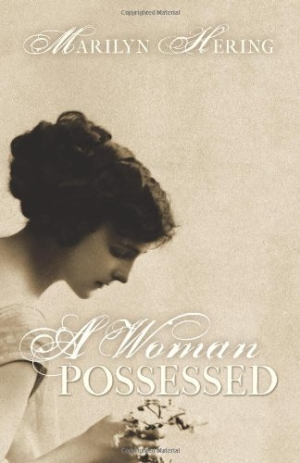
A Woman Possessed
Retired high school English teacher Marilyn Hering devoted several years to researching and writing her first novel, A Woman Possessed. Inspired by her father’s long career in the silk mills of Paterson, New Jersey, she has set her story there during the Paterson Silk Strike of 1913. Hering’s extensive research is evident, and the historical details shine as she relates the tale of her fictional main character, Eleanor O’Bannion.
Real people who figured prominently in the famous strike intermingle with Hering’s fictional characters, bringing a realistic focus to this gritty tale of immigrant factory workers struggling to survive amidst upheaval in their already difficult lives.
Hering is at her best describing the burdens of the working poor during a time of social turmoil and change. She provides an accurate portrayal of the clashing needs and desires that drive both the union movement within America’s garment and textile industries and the increasingly vocal women’s movement of the era. Relying on factual accounts, Hering weaves her story around the documented activities of agents of the Industrial Workers of the World (IWW,) who arrive in Paterson to inspire the mill workers to organize against the owners. Her tale centers on the mill where Eleanor and her family work, allowing the strike and other local activities to serve as a backdrop to their adventures.
Eleanor’s story is a romance. A headstrong and distrustful seventeen-year-old, she encounters more than her share of drama over a very short period of time. Carrying secrets of past abuse by her father and complicity in his death, she suffers molestation by her work supervisor, falls in love with a union agent, marries and has a child with someone else, and ultimately decides to pursue true love. Nothing works out as planned.
Eleanor’s story is not always believable, but that is part of its appeal. Eleanor seems implausibly forthright for someone supposedly living within a self-protective shell, haunted by constant fear that is “always threatening to break out.” Her actions often seem as manipulative as they are self-protective. “I can’t dwell on the past. I can’t!” she declares, yet it is that very past that defines who she is and motivates much of what she does. She is a complicated but endearing character, and fans of romance will forgive her immaturity, look beyond the improbabilities, and root for her to find happiness.
Hering’s writing style reveals a few quirks, undoubtedly intentional, that can be disconcerting. She often dispenses with conjunctions and uses commas instead, which leaves many sentences feeling incomplete. Phrases like “spoke with the Buchanans, other guests” and “visited a concession, brought back two ice cream sundaes” seem to end too abruptly. Equally curious is her use of the simple past tense when the past perfect would be more appropriate. “She lay uncertain what happened,” for instance, lacks the perspective that “had happened” would provide. Otherwise, only an occasional awkward phrase and overuse of the word “clench” impede the flow of her clear, well-ordered prose.
Hering is planning a sequel, A Woman Beloved, that likely will continue Eleanor’s story. With the strike over, perhaps the women’s movement, left hovering in the background of A Woman Possessed, will serve a larger role in the next installment. Fans of romantic historical fiction will be waiting.
Reviewed by
Cheryl Hibbard
Disclosure: This article is not an endorsement, but a review. The publisher of this book provided free copies of the book and paid a small fee to have their book reviewed by a professional reviewer. Foreword Reviews and Clarion Reviews make no guarantee that the publisher will receive a positive review. Foreword Magazine, Inc. is disclosing this in accordance with the Federal Trade Commission’s 16 CFR, Part 255.
